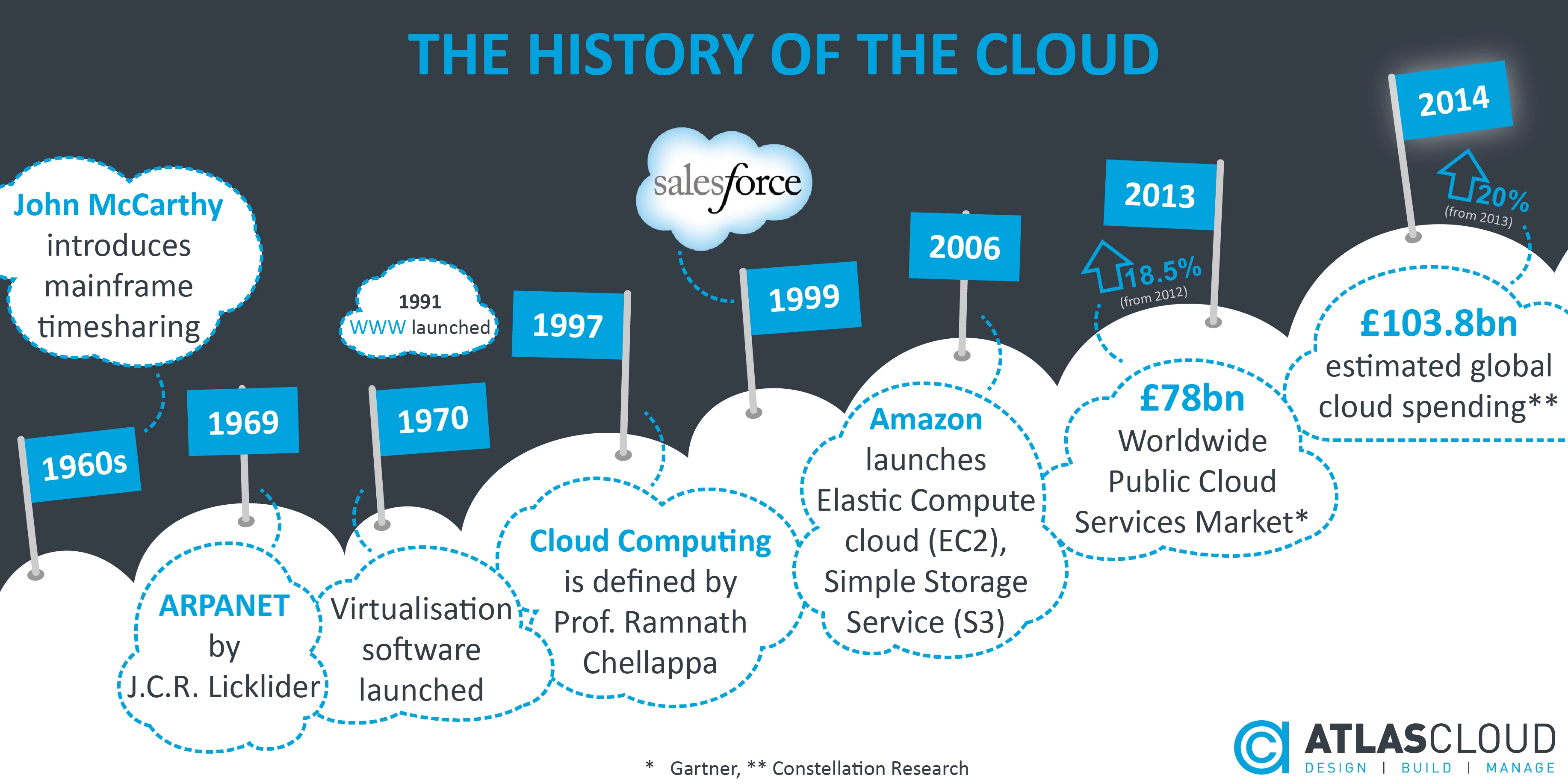
Partner Article
Where do Clouds come from?
Using the cloud is on the increase, knowledge and understanding is on the increase and has come a long way since the survey in 2012 which revealed that 51% of Americans (from a sample of 1000) believed that stormy weather would adversley affect cloud computing and only 16% knew what cloud computing was. http://www.webpronews.com/americans-think-cloud-computing-comes-from-actual-clouds-2012-08
But what is it and where did it come from?
Cloud computing is one of the most disruptive technologies of our time, hopefully this brief history will help to explain it.
Early 1960s
John McCarthy, the computer scientist, devised the notion of timesharing, enabling organisations to simultaneously use an expensive mainframe. This cut computing costs and is described as a significant contribution to the development of the internet, and a precursor of cloud computing.
http://www.independent.co.uk/news/obituaries/john-mccarthy-computer-scientist-known-as-the-father-of-ai-6255307.html
1969
The idea of an “intergalactic computer network” was introduced by J.C.R. Licklider, who was responsible for enabling the development of ARPANET (Advanced Research Projects Agency Network). His vision was for everyone on the globe to be interconnected and being able to access programs and data at any site, from anywhere.
http://www.ibiblio.org/pioneers/licklider.html
1970
Using virtualisation software like VMware, it became possible to execute one or more operating systems simultaneously in an isolated environment. Complete computers (virtual) could be executed inside one physical hardware which in turn can run a completely different operating system.
1997
The first known definition of the term “Cloud Computing” seems to be by Prof. Ramnath Chellappa in Dallas in 1997 – a “computing paradigm where the boundaries of computing will be determined by economic rationale rather than technical limits alone.”
http://goizueta.emory.edu/faculty/academic_areas/isom/chellappa_ramnath.html
1999
The arrival of Salesforce.com in 1999 pioneered the concept of delivering enterprise applications via a simple website. The services firm paved the way for both specialist and mainstream software firms to deliver applications over the internet.
2003
The first public release of Xen, which creates a Virtual Machine Monitor (VMM) also known as a hypervisor, a software system that allows the execution of multiple virtual guest operating systems simultaneously on a single machine.
2006
In 2006, Amazon expanded its cloud services. First was its Elastic Compute cloud (EC2), which allowed people to access computers and run their own applications on them, all on the cloud. Then they brought out Simple Storage Service (S3). This introduced the pay-as-you-go model to both users and the industry as a whole, and it has basically become standard practice now.
2013
The Worldwide Public Cloud Services Market totalled £78bn, up 18.5 per cent on 2012, with IaaS (infrastructure-as-a-service) the fastest growing market service.
http://www.gartner.com/newsroom/id/2352816
2014
In 2014, global business spending for infrastructure and services related to the cloud will reach an estimated £103.8bn, up 20% from the amount spent in 2013 (Constellation Research).
https://www.constellationr.com/content/roundup-cloud-computing-forecasts-and-market-estimates-2014
So that’s the ‘cloud’ and it will increasingly become a part of our lives.
This was posted in Bdaily's Members' News section by Atlas Cloud .
Enjoy the read? Get Bdaily delivered.
Sign up to receive our daily bulletin, sent to your inbox, for free.








 We don’t talk about money stress enough
We don’t talk about money stress enough
 A year of resilience, growth and collaboration
A year of resilience, growth and collaboration
 Apprenticeships: Lower standards risk safety
Apprenticeships: Lower standards risk safety
 Keeping it reel: Creating video in an authenticity era
Keeping it reel: Creating video in an authenticity era
 Budget: Creating a more vibrant market economy
Budget: Creating a more vibrant market economy
 Celebrating excellence and community support
Celebrating excellence and community support
 The value of nurturing homegrown innovation
The value of nurturing homegrown innovation
 A dynamic, fair and innovative economy
A dynamic, fair and innovative economy
 Navigating the property investment market
Navigating the property investment market
 Have stock markets peaked? Tune out the noise
Have stock markets peaked? Tune out the noise
 Will the Employment Rights Bill cost too much?
Will the Employment Rights Bill cost too much?
 A game-changing move for digital-first innovators
A game-changing move for digital-first innovators